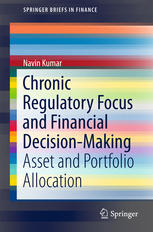

Most ebook files are in PDF format, so you can easily read them using various software such as Foxit Reader or directly on the Google Chrome browser.
Some ebook files are released by publishers in other formats such as .awz, .mobi, .epub, .fb2, etc. You may need to install specific software to read these formats on mobile/PC, such as Calibre.
Please read the tutorial at this link: https://ebookbell.com/faq
We offer FREE conversion to the popular formats you request; however, this may take some time. Therefore, right after payment, please email us, and we will try to provide the service as quickly as possible.
For some exceptional file formats or broken links (if any), please refrain from opening any disputes. Instead, email us first, and we will try to assist within a maximum of 6 hours.
EbookBell Team

4.0
6 reviewsIn this book, the relationship between financial decision-making and chronic regulatory focus is explored to provide a better understanding of consumer decisions. Financial decisions are modelled on the basis of assets and portfolios sensitive to particular regulatory foci. Studies in the book test whether participants select assets/portfolios that conform to their respective foci. In addition, given that gender, age and education can shape financial decisions, further hypotheses are put forth to explore whether these are related to asset and portfolio selection and regulatory focus. As consumers tend to make financial decisions prior to priming, this book diverts from previous research involving primed states of regulatory focus and instead explores the chronic state. The study employs two complementary instruments, the eye tracker and self-report, to explicate the hypotheses. As the main hypotheses were not supported, the author posits that the harsh worldwide financial climate may have acted as an external influence, moving participants to select assets and portfolios not aligned with their foci. This study marks a valuable contribution to the current literature concerning financial decision-making, the underlying motivational systems and external influences, and will promote further research in these areas. It offers an essential resource for academics and students interested in how regulatory focus interacts with financial decisions and the overarching economic climate.